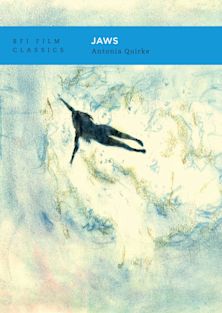- Home
- ACADEMIC
- Film & Media
- British Film Institute
- Close Encounters of the Third Kind
- Delivery and returns info
-
Free UK delivery on orders £30 or over
You must sign in to add this item to your wishlist. Please sign in or create an account
Description
Steven Spielberg's Close Encounters of the Third Kind (1977) is a film very much of its cinematic moment, combining the gritty realism of entrapment in the everyday with furtive dreams of escape.
Dana Polan's compelling study of the film examines its significance to New Hollywood cinema and the science fiction genre. He argues that Close Encounters is a film that is an allegory of the cinematic experience overall; it both narrates a tale of visual seduction and plays it out viscerally for the spectator who shares the amazement of the protagonist Roy Neary as his mundane reality is transformed into something awe-inspiring.
Providing an in-depth look into the film's production history, including all three different versions, Polan situates Close Encounters within Spielberg's repertoire. He argues that despite the film's popular success, it is in fact a rejection of several entrenched American values, including family, home and marriage. It offers, through its visual fascination, alternative understandings of masculinity and morality, familial responsibility, and what it means to follow the 'American Dream'.
Table of Contents
Plot
Setting the Scene: A Study in Modern American Culture
The Ultimate Trip (?)
Whoosh
'Are you seeing what I'm seeing?'
Ways of Seeing
The Sound of Hands Clapping
Cocoons of Sound
The Cinema of 1977
Seventies 'New – ' and 'Newer' – Hollywood
Making a New Hollywood Movie
Portraits of the Artist
Responses
Spin-Offs, Ancillary Items, and 'Sequels'
Continuing Encounters with Close Encounters
Notes
Credits
Product details
| Published | 03 Oct 2024 |
|---|---|
| Format | Paperback |
| Edition | 1st |
| Extent | 104 |
| ISBN | 9781839025778 |
| Imprint | British Film Institute |
| Illustrations | 60 colour illus |
| Dimensions | 190 x 135 mm |
| Series | BFI Film Classics |
| Publisher | Bloomsbury Publishing |
About the contributors

ONLINE RESOURCES
Bloomsbury Collections
This book is available on Bloomsbury Collections where your library has access.



































